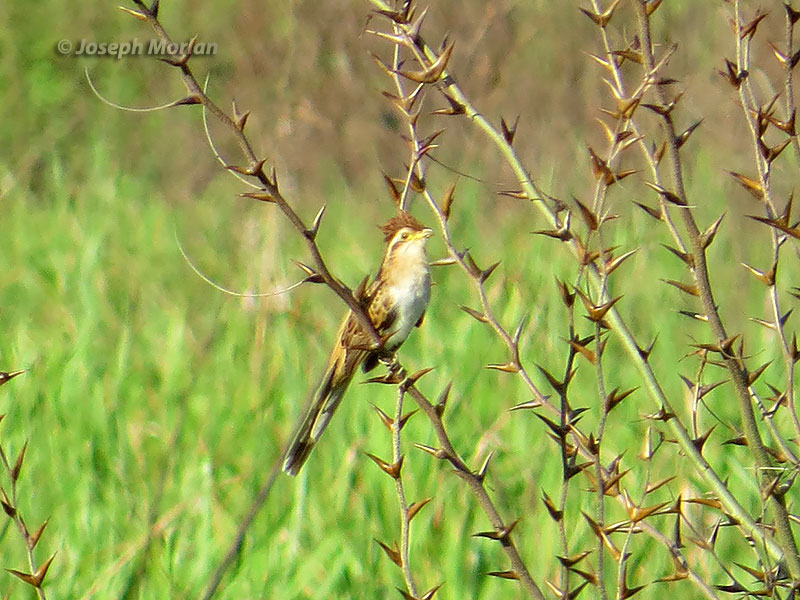
This is a unique bird in its own genus. Some authors call it the American Striped Cuckoo, presumably to avoid confusion with the African Striped Cuckoo (Levaillant's cuckoo). This is an adult showing its bushy reddish-brown crest. It is a shy species of open habitats, heard more often than seen and one of only three New World cuckoos that are obligate brood parasites. Hosts are primarily small birds such as furnarids and wrens that construct enclosed nests. The cuckoo chick kills its host nestmates; the foster parents remove their dead young and continue feeding and raising the interloper cuckoo.
I follow Clements/eBird who recognize two races. The brighter heavier-billed birds of Middle America are assigned to T. n. excellens and populations in South America are the duller, smaller-billed nominate race. However IOC, HBW, and HM4 follow Payne (2005) in considering this species monotypic citing overlap in size and plumage between various populations. Canon PowerShot SX50 HS.
References:
Lowther, Peter E. 2010. Striped Cuckoo (Tapera naevia), version 1.0. In Neotropical Birds Online (T. S. Schulenberg, editor). Cornell Lab of Ornithology, Ithaca, New York, USA. https://doi.org/10.2173/nb.strcuc1.01
Payne, R. B. 2005. The cuckoos. Oxford University Press, New York, New York.
Payne, R. (2018). Striped Cuckoo (Tapera naevia). In: del Hoyo, J., Elliott, A., Sargatal, J., Christie, D.A. & de Juana, E. (eds.). Handbook of the Birds of the World Alive. Lynx Edicions, Barcelona. (retrieved from https://www.hbw.com/node/54910 on 8 January 2018).